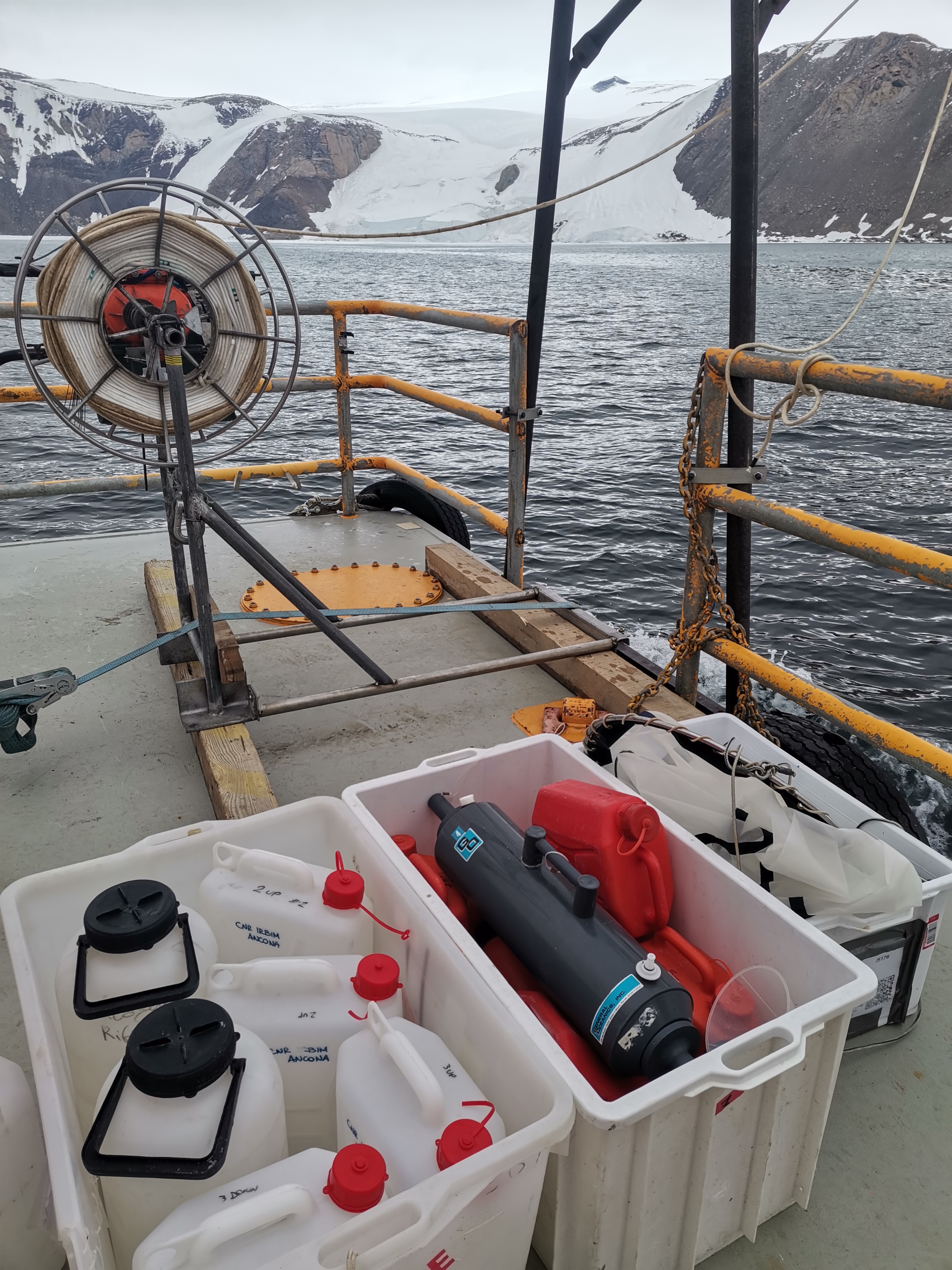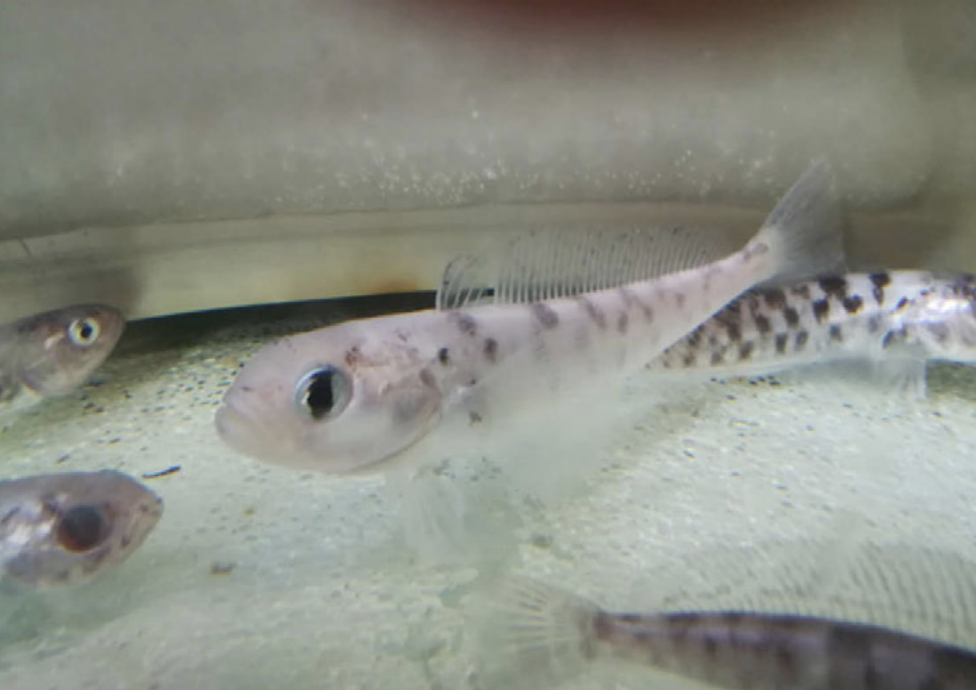FORMATO_DISTRIBUZIONE_DATI (ASCII, CSV, NetCDF...)
Type of resources
Topics
INSPIRE themes
Keywords
Contact for the resource
Provided by
Years
Formats
Representation types
Update frequencies
status
Scale
-
The data are related to the ionic composition of atmospheric aerosol continuously collected at Dome C. They refer to PM10 and size-segregated aerosol collected at 2-day and 4-day resolution, respectively. The measured chemical parameters include main and trace inorganic anions and cations and selected organic anions (methanesulphonic acid - MSA).
-

The RESTORE project is dedicated to the development of portable robotic technologies with the capability to perform multi-disciplinary multi-parametric 3-D monitoring of marine environment. Its primary focus lies in examining critical areas such as the air-sea-ice and water-sediment interfaces in Antarctica. This endeavour aims to support various research aspects, including the study of microbial ecology and DNA tracing, as well as the investigation of Antarctic geology, particularly the dynamics surrounding glaciers and ice-covered coastal regions. Furthermore, RESTORE is committed to scrutinising the impacts of climate change on the Antarctic atmosphere and the exchanges that occur between the sea and air. The comprehensive dataset collected during RESTORE will provide researchers with a holistic perspective on an extreme and remote environment such as Antarctica, facilitating the interpretation of atmospheric and oceanic dynamics at the interface zones and, the 3D mapping of the underwater environment and the physical characterisation of the sampled region.
-
BRIEF NARRATIVE SUMMARY OF THE CONTENT OF THE RESOURCES(S)
-
Isotopic composition (Pb and Sr) in particulate matter (PM10) samples, collected at Concordia with monthly time resolution, since January 2018, obtained by ICP-MS.
-

The effects of sea ice melting, and the consequent changes in the trophic conditions in Antarctic ecosystems, have been focused on phytoplankton with cross-food web links from krill to penguins, while the consequences on the planktonic microbial food web (viruses, prokaryotes and unicellular eukaryotes), driving biogeochemical cycles, have been largely ignored. This research investigates how changes related to sea ice melting influence the diversity and functioning of planktonic microbes in the Ross Sea coastal ecosystem of Terranova Bay. The objectives are: i) to investigate the temporal changes of planktonic microbial biodiversity, ii) to investigate the biodiversity/ecosystem functioning relationships iii) to assess the role of viruses on biodiversity and biogeochemical cycles, iv) to identify the drivers that shape microbial biodiversity and functions, and v) to shed light on the interactions within the planktonic food web, and their response to the ice melting. META-ICE-ROSS integrates ad hoc sampling with sophisticated methodologies of high-throughput sequencing of microbial DNA (metagenomics), never documented in previous Italian expeditions at Terranova Bay. The sampling includes the collection of seawater beneath the pack ice at increasing distance from the MZ Station and characterised by different thermohaline conditions, on a weekly basis from early November to mid January. The groundbreaking nature of META-ICE-ROSS will allow to provide unprecedented evidences on the role of microbial interactions in the functioning of the Ross Sea coastal ecosystem, to improve knowledge on biological changes due to global climate changes and, nonetheless, to provide a baseline assessment of the functioning of the microbial food webs and carbon sequestration in the pelagic environment in the Ross Sea region, within the context of the Ross Sea Region Marine Protected Area (RSRMPA) and its monitoring and research plan.
-
The current vision of global climatic changes stresses on the interlinked action of many factors, often more evident at regional scales. Polar regions are among the areas most sensitive to perturbations of the climate: through connections involving ocean, atmosphere, biosphere, lithosphere and cryosphere, they respond to, amplify, and drive changes elsewhere in the Earth system, so that understanding their role is essential. Peculiar characteristics of Polar Regions contribute to modify the energy and radiation budget, and the characteristics of the polar atmospheric boundary layer (ABL), increasing relevance at regional level of coupling processes between components of the climate system, especially in the coastal region. In particular, the long polar night, the sea-ice and snow coverage, favouring the persistency of stable atmospheric conditions, and the local and mesoscale circulation interactions, all affect the status and variability at different time scales of components of the regional climate system. Predicting future conditions of the polar regions is the goal of the Polar Prediction Project and of one of its key elements, the Year of Polar Prediction (YOPP, http://www.polarprediction.net/yopp.html), scheduled to take place from mid-2017 to mid-2019). This requires the scientific knowledge of their present status as well as a process-based understanding of the mechanisms of change. The parameterization of physical processes in regional and global hydrodynamical numerical models of the atmosphere is not yet enough accurate for a correct representation of all components of the climatic system and of their connections, the knowledge of which is needed to determine the role of polar regions in the global climate. As an example, more extended and integrated dataset are required to improve the parameterization of the ABL, for complex orography areas such as the polar coastal regions. The general scope of this project is to improve the understanding of the surface-atmosphere mass and energy exchanges at an Antarctic coastal site in the Ross Sea through continuous and accurate measurements of the atmospheric parameters, and development and verification of multiscale modelling, and through these activities, to address some of the relevant questions included in the roadmap for Antarctic and Southern Ocean science for the next two decades and beyond. Measurements will be carried out year-round at the new Korean Jang Bogo Antarctic Research Station (JBS), located at the coast of Terra Nova Bay, in the vicinity of the Italian Mario Zucchelli Station. Measurement and analysis of radiation components, atmospheric constituents and energy fluxes, meteorological and micrometeorological parameters, will be implemented jointly by Korea Polar Research Institute (KOPRI), CNR and UNIFI, in a way similar to the collaboration already active in the Arctic. Such implementation will be very useful to close a gap in the global climate observation system (GCOS) and contribute to WMO programs providing scientific data and information on meteorological and radiation regimes, vertical structure and chemical composition of the atmosphere.
-

The dataset contains 500-2000 MHz brightness temperature measurements gathered by the Ultra-Wideband Software Defined Microwave Radiometer (UWBRAD) during the Ice Sheet and Sea Ice Airborne Microwave eXperiment (ISSIUMAX) in Terra Nova Bay, Antarctica. The published dataset is in ascii format and consists of geolocated nadiral brightness temperature measurements collected over 12 sub-bands whose central frequencies are 560, 660, 820, 900, 1180, 1240, 1370, 1500, 1630, 1740, 1860, and 1950 MHz. Only measurements with a viewing angle within 5 deg with respect to nadir are reported.
-

Trophic interactions underlie coexistence mechanisms between species, define the functional role of specie within communities, affect biodiversity and bioaccumulation processes of heavy metal. Sea-ice dynamics, which at Terra Nova Bay is characterized by an extraordinary seasonality, drives interspecific interactions and the exchange of materials between ecosystem compartments. Indeed, the activation of the primary production after sea-ice break up opens alternative trophic pathways for consumers. The “next generation SRPs” represent a highly appropriate framework for the present project which follows the results obtained with the previous project ISOBIOTOX (PNRA 2013) and aims at (i) determine topological and functional metrics of sympagic and pelagic food webs at Terra Nova Bay under different conditions of sea-ice coverage along a distance gradient from the nearest open water polynya to areas were the seasonal sea-ice coverage persists longer; (ii) evaluate bioaccumulation and biomagnification of heavy metals in trophic sources at the base of the food web and in target species along food chains, including fishes of commercial interests and top predators, both in the presence and absence of sympagic and pelagic primary producers. High resolution food webs will be reconstructed by means of the simultaneous elemental and isotopic analysis of different elements (C and N) and the bioaccumulation of pollutants. The research program integrates complementary research approaches: (a) Elemental analysis coupled with mass spectrometry for stable isotope analysis (δ13C, δ15N) in animal and vegetal tissues and dead organic matter, (b)analyses of heavy metals accumulation (Chromatography) in the constituent species of the Antarctic food web.
-

Trophic interactions underlie coexistence mechanisms between species and affect biodiversity and heavy metal bioaccumulation processes. Sea ice dynamics, which at Terra Nova Bay is characterized by an extraordinary seasonality, drives interspecific interactions. Indeed, the activation of the primary production after sea-ice break up opens alternative trophic pathways for consumers. By means of C and N stable isotope analyses, the present project aims at (i) determining food web structure at Terra Nova Bay at different bathymetries and in opposite sea-ice cover conditions; (ii) evaluating heavy metal bioaccumulation in species along food chains, including fish of commercial interests, both in the presence and absence of photosynthetic primary producers. The hypothesis to be tested is if the activation of primary producers following sea-ice break up significantly modifies the food web structure and stability against species loss, as well as heavy metals concentration along food chains. Data on Antarctic food webs are scarce, and even scarcer is our knowledge on mechanisms of primary and secondary biodiversity loss and biomagnification processes in invertebrates and fish. The present research project will shed light on mechanisms underlying biodiversity maintenance in the Antarctic ecosystem and on risks for human health related to heavy metals accumulation in fish species currently or potentially exploited commercially, also in light of expected changes in the extension of sea ice cover. A valuable reference baseline will be established for future studies at the Italian Antarctic Station and for the Marine Protected Area in the Ross Sea.
-

Anthropogenic microparticles (AMs) were found for the first time in specimens of Trematomus bernacchii collected in 1998 in the Ross Sea (Antarctica) and stored in the Antarctic Environmental Specimen Bank. Most of the identified AMs were fibers of natural and synthetic origin. The natural AMs were cellulosic, the synthetic ones were polyester, polypropylene, polypropylene/polyester, and cellulose acetate. The presence of dyes in the natural AMs indicates their anthropogenic origin. Five industrial dyes were identified by Raman spectroscopy with Indigo occurring in most of them (55%). Our research not only adds further data to the ongoing knowledge of pollution levels in the Antarctic ecosystem, it provides an interesting snapshot of the past, highlighting that microplastics and anthropogenic fiber pollution had already entered the Antarctic marine food web at the end of the ‘90 s. These findings therefore establish the foundations for understand the changes in marine litter pollution over time.